Oaking Wine
The Truth: Oak Makes Wine Taste Better
From the golden hued Chardonnays of Montrachet to first-growth Bordeaux, the most expensive wines in the world are produced with oak aging. This isn’t an opinion, it’s true. The top fifty most expensive wines in the world are oak-aged in some way. Oak is a crucial and often overlooked component in the world of fine wine. Everything from the type, size, age, grain, and treatment of an oak barrel greatly affects the finished wine.
Let’s take a closer look at the three main types of oak trees used for wine oak aging, as well as treatments that add the perfect ‘je ne sais quoi’ to a finished wine.
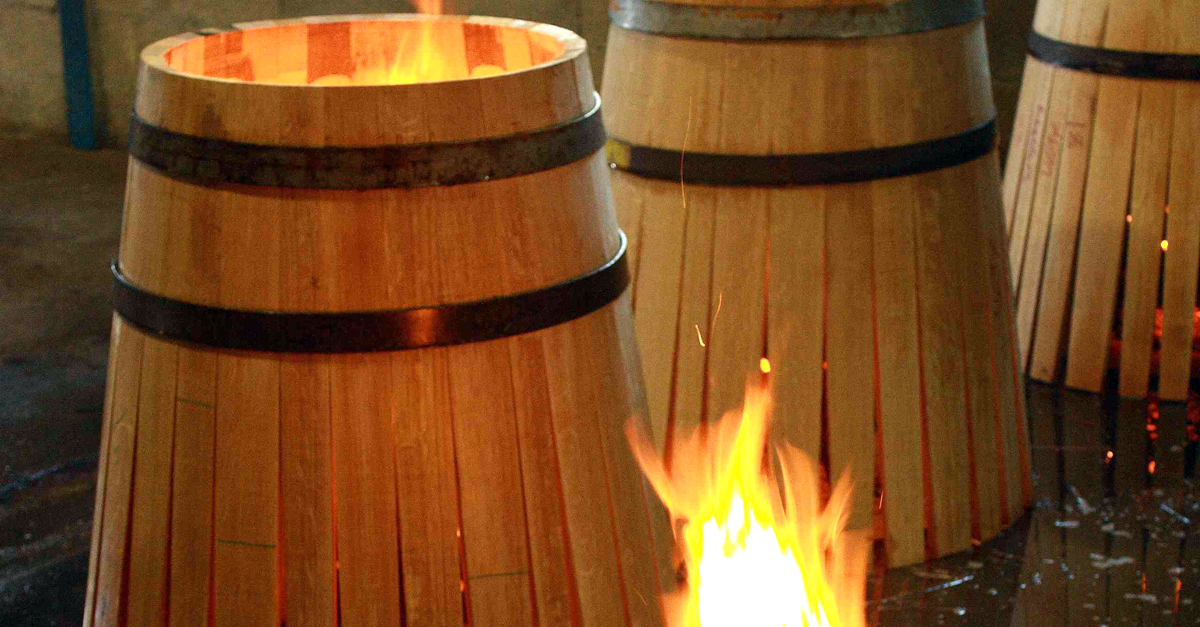
3 Main Types of Oak
French Oak
The oak forests in France are the source of several species of European Oak trees, including white oak used for oaking wine. French Oak (Quercus robur) is common throughout Europe and Sessile Oak (Quercus petraea) is a finer grain species that is more sparse. The forests used for barrel oak are selected for their fine-grained consistent wood. Most notably, well-made barrels from Alliers, Vosges, and Tronçais command the highest prices (upwards of $4,000 per barrel). Limousin oak is more loose-grained, making it more suited for Cognac, Armagnac, Sherry, and whiskey aging.
French Oak is The Popular Choice for Oaking Wine
French Oak is very popular for oak aging premium wines. It tends to add flavor compounds (see below) in a more subtle way than the other main types of oak. Pinot Noir and Chardonnay are an ideal match for French Oak because they “soak up” flavor more easily than other varieties (such as Cabernet Sauvignon).

Different grains of French Oak trees. Old growth trees have the tightest grains.
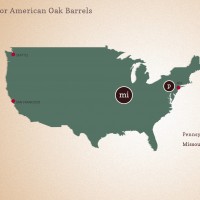
American Oak
There are many types of oak trees in America, but the species used for oaking wine is American White Oak (Quercus alba). Quercus alba grows throughout the Eastern US and is commonly found in Missouri. American cooperages predominantly produce barrels for the Bourbon industry. Because of the demand, whiskey makers like Scotland’s “The Macallan” own forests in the United States. American oak tends to be in less demand for wine barrel use.
Where American Oak Shines
American Oak imparts a lot of flavor. Wine experts often describe the American Oak flavors as dill, coconut, and vanilla. One thing is for sure, it adds ruggedness to clean, fruit-forward new world wines. Examples of American wine producers who’ve championed the use of American oak include Silver Oak and 5 Star Cellars.
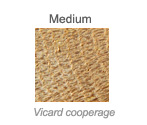
American White Oak grain sizes tend to have looser grains than both French and Eastern European Oak (Quercus robur).
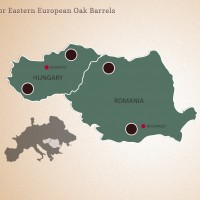
Hungarian / Eastern European Oak
Hungarian and Eastern European Oak is the same type of oak tree as French Oak (Quercus robur). More and more Eastern European Oak barrels are being used at wineries for oaking wine. The popular choice for Eastern European Oak is because it’s remarkably similar to French Oak, but costs much less.
Why Hungarian? Where It’s Used
After talking with several winemakers about using Hungarian and Eastern European Oak, many like to use it on full-bodied varieties, such as Malbec and Petite Verdot. They believe the wines are strong enough to “hold up” to the richer, nutty flavors the wood imparts on the finished wine.
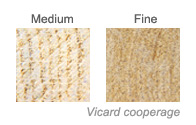
European Oak is commonly considered the midway point between American and French Oak.

What Does Oak Add?
Besides making a cellar look cool, oak adds aroma compounds to wine. Fundamentally, oak lactones have coconut aromas. Some oak is “toasted” by either burning with fire or by using heat radiation to increase different aroma compounds.
- Vanillan
- The aroma of vanilla
- Eugenol and Isoeugenol
- Spice and clove notes
- Furfural and 5-Methylfurfural
- Caramel and sweet aromas
- Guaiacol and 4-Methulguaiacol
- Charred and smoky aromas
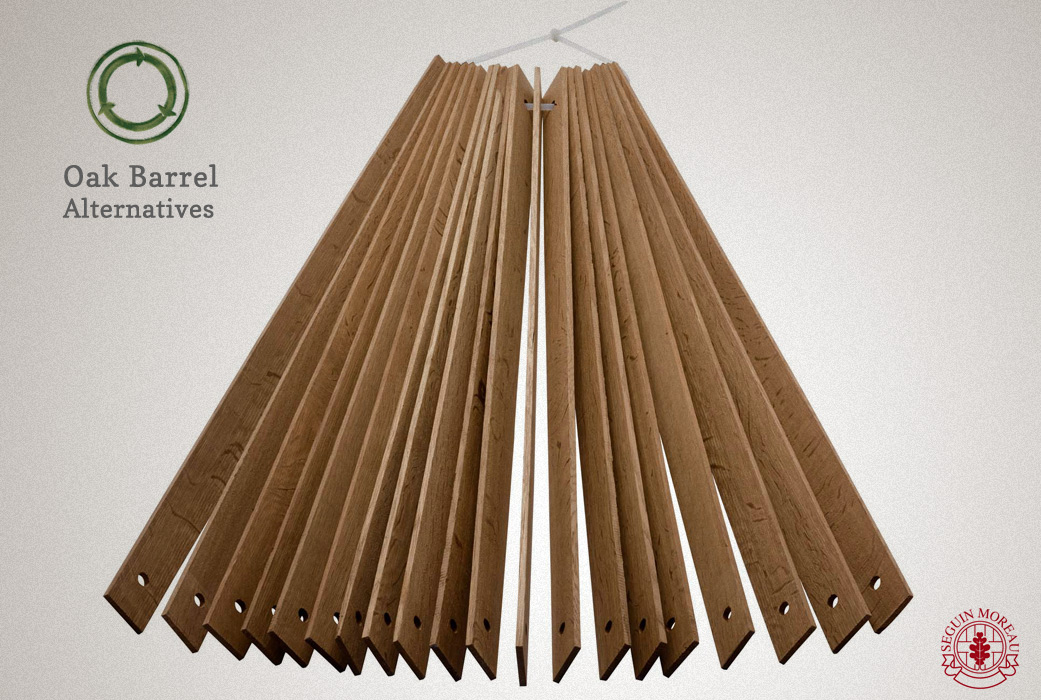
Oak Barrel Alternatives
No matter how you look at it, using new oak barrels for every vintage is wasteful. It’s also very expensive. An oak tree will only make enough wood for about 2 barrels, which will hold only 50 cases of wine. As demand for wine worldwide increases, oak forests will be strained. Oak barrel alternatives are a good idea and here’s why:
Oak Barrel Alternatives are More Efficient
A lot of the aroma compounds in new oak barrels are wasted in unused surfaces (i.e. the outside of the barrel). Oak staves, oak chips, and oak cubes are smaller and can use all sides to add aromas to wine.
Bourbon producers must age their whiskies in new oak for a minimum of one year by law.
Oak Barrels Can Be Used for Upwards of 100 Years
It’s perfectly okay if a winemaker is using oak barrels, after all, they last for up to 100 years. Using oak barrels to store wine is great because forests are a renewable resource. After the first 2-3 uses, an oak barrel stops flavoring a wine and is considered “neutral.” See the Life of Cask, From Wine to Whiskey.
Oak alternatives are cheaper
Not only are oak barrel alternatives cheaper because they can use more of a single oak tree, they are also more efficient to ship. Oak alternatives take up a much smaller carbon footprint than costly and heavy barrels.
Sources
Pictures of Oak Barrels and Oak Staves provided by Seguin Moreau Napa Cooperage
Nadalie Research on Oak Compounds
Information on French oak forests from Bouchard Cooperages
Quercus robur on wikipedia
Quercus petraea on wikipedia
Quercus alba on wikipedia
Vicard Cooperage Oak Grain Images
Top 50 most expensive wines in the world on wine-searcher
